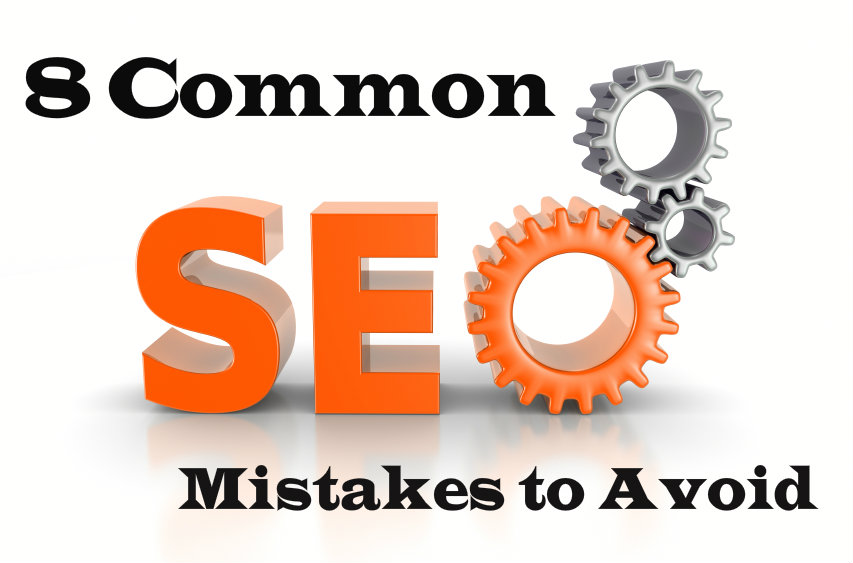 Every website needs to have a facelift once in a while. Let’s face it, web developers are not SEO’s in most cases. Each individual is experienced in their own area and possess their own specialties. When a website redesign transpires, you need to keep your SEO team involved in the process to avoid common SEO mistakes that can occur.
Every website needs to have a facelift once in a while. Let’s face it, web developers are not SEO’s in most cases. Each individual is experienced in their own area and possess their own specialties. When a website redesign transpires, you need to keep your SEO team involved in the process to avoid common SEO mistakes that can occur.
Here are 8 of the most common SEO mistakes we see in redesign projects:
1. The Website is Non-Indexable
We’ve run into this issue a lot with CMS websites specifically. These sites will have an option of whether or not the site visible to search engines. Often times in development you don’t want your website indexable but then developer will forget to check “Yes, I want my website visible to search engines” after the website has launched. By having this option set to “No” it will be a lot harder (or impossible) to get your entire website crawled and indexed by search engines.
This can also be an issue when the website has indexing issues due to incorrect canonical settings. When using canonicalization, it’s important to know how to implement the proper indexing code because if it’s done incorrectly, it can prevent search engines from accessing certain pages and prevent those pages from being indexed properly.
2. The On-page SEO Team Is Not Involved in the Process
A common mistake that’s made is that companies don’t always involve their SEO team in the process of redesign or when developing a brand new site. To avoid common on-page SEO mistakes, the SEO team needs to be involved in the design from start to finish.
When redesigning or developing a new website, you should be thinking about how this will impact the SEO from the get go. When I say SEO, I mean website content, meta data, taglines, calls to action, imagery, etc. Throughout the process you should ask yourself how each item affects the SEO, page by page. Also, this is the perfect time to improve your on-page SEO, or add to what is already there.
3. The Website Content Isn’t Properly Optimized Before Implementation
This is a prime example of why you should have the SEO team involved from the get go. A mistake a lot of companies make is they will write content, but not optimize the content for keywords and conversions. Each page will be just a jumble of content with no headers, meta tags, or a clear call to action. Who reads huge blocks of content these days? Ain’t nobody got time for that.
To avoid this, it’s best to have the content written before the website is live, and sent to your SEO team for optimization. This way when the web developer is implementing content, they can also implement all of the correct headers, ALT tags, and meta tags.
4. Failure to Analyze Current Analytics
Your website analytics are your best friend when looking to restructure landing pages and web copy. This is often overlooked in the website redesign process. If not properly assessed before redesign, it can cause your bounce rate to increase and conversion rates to decrease. After all, what are you basing your content and structure off of when you’re not looking at the numbers?
Our recommendation is to assess your current landing page data. Look for:
- Bounce rates
- Conversion rates
- Average time on page
- Conversion funnel
The pages that have the highest conversion rates and lower bounce rates are the ones to look at first. What’s different about these pages compared to pages that have lower conversion rates? Do they have bullet points and headers instead of plain blocks of text? These are just some things to look for when analyzing your current website analytics. You want to make sure your landing pages include elements that high converting landing pages already have. Don’t reinvent the wheel – just look at the data in front of you.
5. Not Utilizing 301 Redirects
We’ve come across this issue a lot here at Eminent SEO. Companies will come to us wondering why they had such a huge decrease in traffic after they launched their new site. This is one of the first things we look at and when we ask if they recently had a redesign done 9 times out of ten the answer is yes. If you change your URL’s at all and 301 redirects are not used properly when redesigning and launching a new website, you will lose traffic and rankings. But why?
There are a number of reasons you can lose organic rankings and traffic. For example, if inbound links are pointing to URL’s in your website that no longer exist they will now direct to 404 pages – and Google doesn’t index broken links Also, a lot of times during a redesign the URL structure can change which causes internal broken links. You have a call to action button linking to another page, for example, and whoops – 404 error. That’s where you’ll immediately lose a user or the search engine spider.
6. Not Implementing Responsive Design
If you’re doing a website redesign, I’d hope that it would include a responsive design. Not only because it’s 2014 and everyone’s on their phone these days, but also because it drastically improves your organic mobile rankings and traffic.
A responsive design is a mobile friendly design where your website will scale to fit all devices (PC, tablet and phone). This is great for SEO because it will scale down your website imagery and make sure your website load quicker on mobile devices. One of the bigger issues with not having a mobile friendly site is the page loading time. This will create a poor user experience which leads to higher bounce rates. Google sees this and can devalue your mobile rankings – they don’t want to serve up sites that have high bounce rates.
My advice – go responsive if you’re not already. After all, mobile search is predicted to surpass desktop search by 2015. Do you want to be that company behind the times when your competition is nailing it with mobile website capability? Probably not…
7. Not Keeping User Experience In Mind
SEO today isn’t only about optimizing the website for keywords, but users as well. Every page should have a goal in mind when designing the page and the goal should be clearly laid out for users to understand the next step they need to take. If a user hits a landing page regarding one of your services, but you don’t have a call to action clearly defining what that user should do next (call, fill out a form, etc.), then the user will likely leave before taking another action. . If a user to bounces before taking another action that could be a potential sale that you just lost.
Always think about how you would navigate through the website as if you were new to using a computer or viewing websites. Would you know exactly where to go or what to do? Think of it in that way. If you can, perform a brief survey using friends and relatives in the demographic you’re targeting. Do they know where to go and what the next step is by page? Use this feedback to make your website dummy proof.
8. Improper URL Silo Structure
A website isn’t supposed to be built where all pages stem from the home page. This is confusing to the search engine spiders and doesn’t provide a clear path for proper indexing and Page Rank distribution. The URL structure should clearly define the path of each page location within the website navigation, starting with the most important pages first. Often times developers will create pages that don’t utilize a proper category or silo structure. Your URL structure should like this: domain/category/subcategory/page. Not like this: domain/all-pages.
This can also happen when a redesign occurs and the developer could be renaming categories, deleting categories, etc. This will affect the entire navigation of the website and could cause all kinds of issues from broken links to orphaned pages. If navigation is changing at all this is also where 301 redirects come into play.
Closing Thoughts
Don’t be that company that waits until after they launch their new website to learn they have major issues. This should be a process that takes place DURING the website redesign and development stages. If you wait to properly SEO the website until after the launch, the damage is already be done.
If you’re considering a redesign OR you’ve had a redesign and lost your organic rankings – let us help! We are experts in launching redesigns with all of the right SEO elements in place… and if you’ve already launched and think it’s too late, don’t worry – we can still help! Just give us a call: (800) 871.4130




#5 and #8 are probably too technical for some people to understand but they are my top recommendations. If you miss important meta SEO, that is easy to fix. If you mess up your website architecture or forget to 301 redirect old URL’s to your new ones you could be TOTALLY screwed. It’s a lot cheaper and safer to just do it right the first time!